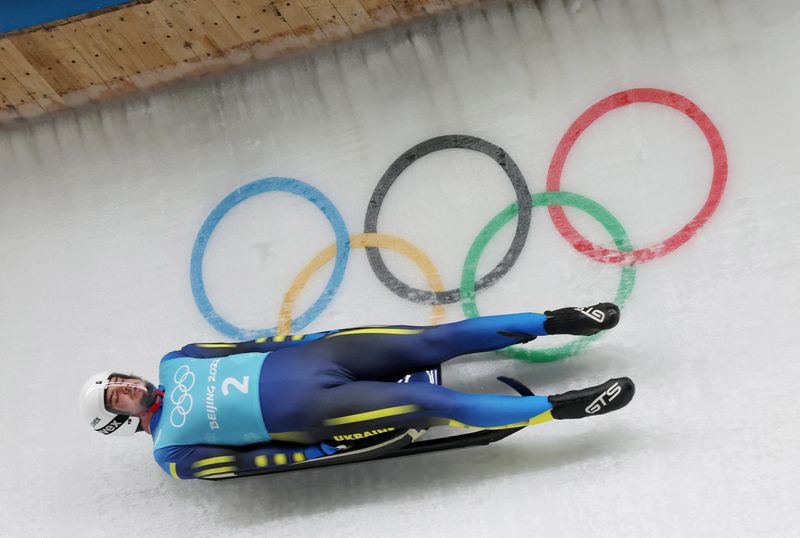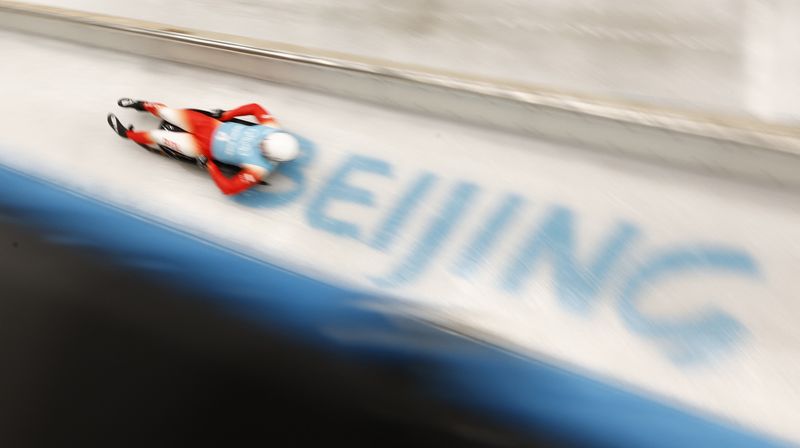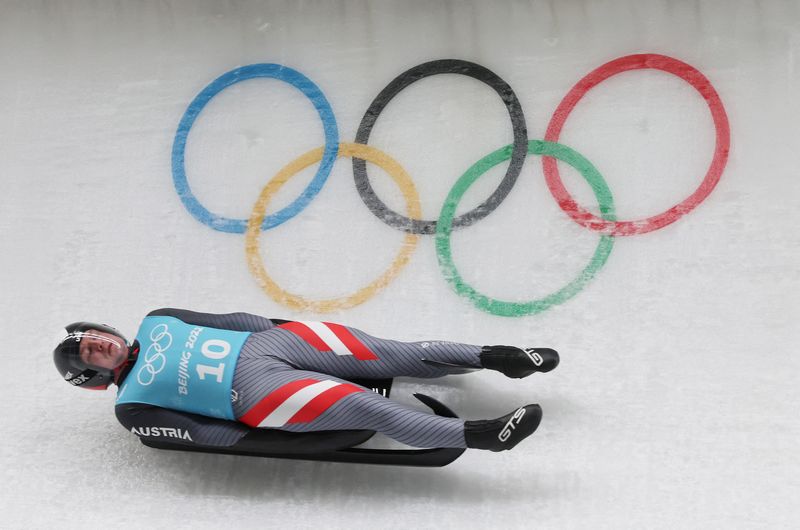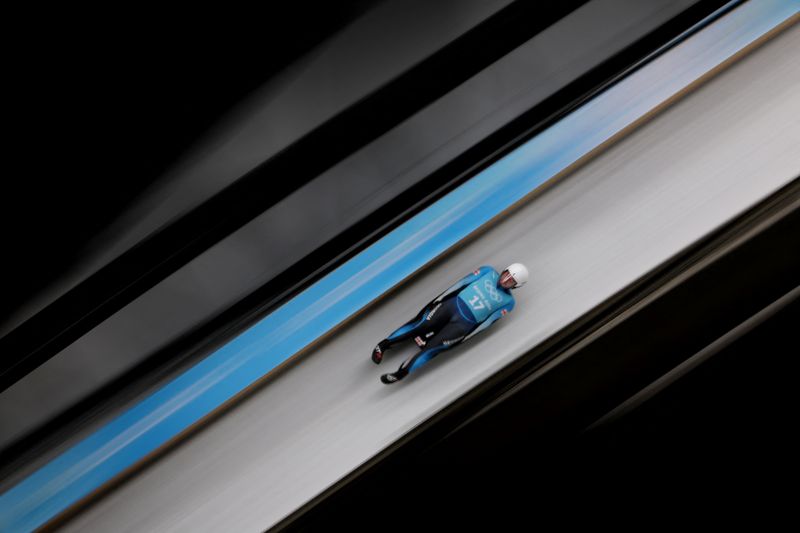YANQING, China (Reuters) – It didn’t take long in Wednesday’s opening for the danger inherent in luge to show itself.
Anton Dukach, the second on to the track in the opening training session for the men’s singles, lay face down on the ice after hitting the side and coming off his sled.
For a moment there was tension in the air at the Yanqing National Sliding Centre with the Ukrainian motionless for several seconds which felt much, much longer.
“I was ok,” said a matter of fact Dukach, after responding to his crash with a solid second run.
With competitors hurtling down the sharp turns of the icy track at speeds of over 130 kph, feet-first and face-up, the risks involved in luge are obvious.
At the Vancouver Olympics in 2010, Georgian luger Nodar Kumaritashvili of Georgia tragically died after crashing in a practice run.
That was the first fatality in 35 years for the sport but despite the horror, on Wednesday the Georgian’s cousin, Saba Kumaritashvili, made his Olympic debut in luge.
Also taking part in the training for Saturday’s men’s singles was Poland’s Mateusz Sochowicz who needed surgery after fracturing his left kneecap and cutting his right leg to the bone in an accident at Yanqing in November last year.
Sochowicz hit a closed barrier that should have been open during a training session and said at the time that he may struggle to have faith in the Olympic course.
But on Wednesday, he was out there, racing with the best in the world.
Television struggles to do justice to the speed at which the athletes, in skin-tight suits and with little protection other than from their helmets, career around the course.
But those who are able to observe from close-up are left in no doubt about the raw speed generated as the luges fly past in a roaring blur.
Britain’s German-born luger Rupert Staudinger said it is an exhilarating sport to compete in.
“I do enjoy it a lot. It is such a great sport, it is fast and so much fun. Hitting the G-forces, from one curve to another, it is like flying just different – I love it – it’s like Formula One, I guess,” he said.
Austria’s Wolfgang Kindl was fastest in Group A with a time of 57.724 while Italy’s Dominik Fischnaller posted a time of 57.810 in the Group B races.
The men’s singles medals will be decided on Sunday with the fourth official run of the competition.
(Reporting by Simon Evans; Editing by Christian Radnedge)























